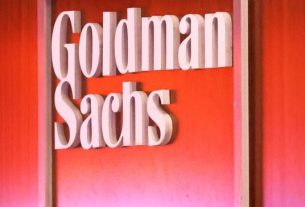|
Getting your Trinity Audio player ready...
|
As the 2024 election cycle heats up, campaign spending has reached unprecedented levels, with over $10.5 billion dedicated to campaign advertisements across various races, from the presidential election down to local contests for county commissioner. This figure, compiled by the ad-tracking firm AdImpact and analyzed by NPR, marks an increase of $1 billion compared to the previous election cycle, underscoring the escalating stakes and strategies in American politics.
Breakdown of Spending
The $10.5 billion figure encompasses a wide array of races and political messages, reflecting the diverse landscape of American electoral politics. The spending is not limited to high-profile national races; it also includes substantial investments in state and local elections, where many political battles are fought.
- Presidential Race
A significant portion of the ad spending is dedicated to the presidential race, where candidates from both major parties are employing aggressive advertising strategies to sway voters. As of now, leading candidates have been pouring millions into television, radio, digital, and social media ads to build their brands, highlight their platforms, and attack their opponents. - Senate and House Races
Senate and House races also account for a large share of the expenditures. With control of Congress hanging in the balance, candidates are utilizing ads to emphasize their legislative accomplishments and criticize the opposition. Key battleground states are seeing particularly high spending, as candidates aim to mobilize voters in tight races. - State and Local Elections
State and local elections are increasingly becoming focal points for campaign spending. As issues such as education, public safety, and healthcare dominate discussions at the grassroots level, candidates are investing heavily in ads to communicate their positions and connect with local constituents.
The Role of Dark Money
A noteworthy aspect of the 2024 election spending is the rise of “dark money” in politics. Groups that do not disclose their donors are pouring significant sums into campaign advertising, often outspending candidates themselves. This trend raises concerns about transparency and accountability in the electoral process, as voters may be influenced by messages from organizations with undisclosed funding sources.
Organizations such as the Center for Responsive Politics have highlighted the implications of dark money in shaping political narratives and the potential for outside groups to dominate the advertising landscape.
Impact on Voter Engagement and Sentiment
The flood of campaign ads is having a tangible impact on voter engagement and sentiment. While high spending can lead to increased awareness of issues and candidates, it can also contribute to ad fatigue among voters. Many individuals report feeling overwhelmed by the sheer volume of advertisements, which can lead to apathy or disengagement from the electoral process.
Moreover, the quality and messaging of ads are crucial. Negative advertising, which often characterizes political campaigns, can polarize voters and exacerbate divisions. Studies have shown that while negative ads can effectively diminish support for an opponent, they can also backfire, leading voters to disengage or seek alternatives.
The Future of Campaign Advertising
As the 2024 election cycle progresses, experts anticipate that spending on campaign ads will continue to rise. With advancements in digital advertising and data analytics, campaigns are increasingly able to target specific demographics and tailor messages to resonate with particular voter segments.
The trend towards digital platforms is also notable. According to AdImpact, digital ad spending has surged, as candidates recognize the importance of reaching voters through social media and online channels, especially younger audiences who may be less likely to engage with traditional media.
Conclusion
The 2024 election cycle is shaping up to be one of the most expensive in U.S. history, with over $10.5 billion spent on campaign ads across all levels of government. This substantial investment reflects the high stakes of the upcoming elections and the strategic emphasis on effective communication with voters. However, the influence of dark money and the overwhelming volume of advertisements pose significant challenges for transparency and voter engagement.
As the election date approaches, the effects of this spending will continue to unfold, highlighting the critical role of campaign advertising in shaping the political landscape and influencing voter behavior.
References
- AdImpact. “2024 Election Ad Spending Data.”
- NPR. “Analysis of Campaign Ad Spending in the 2024 Election Cycle.”
- Center for Responsive Politics. “The Role of Dark Money in Elections.”
- Pew Research Center. “The Impact of Political Advertising on Voter Engagement.”
- The Brookings Institution. “Campaign Spending Trends and Their Implications for Democracy.”
The landscape of political advertising will undoubtedly evolve, and its effects will be felt long after the ballots are cast.



